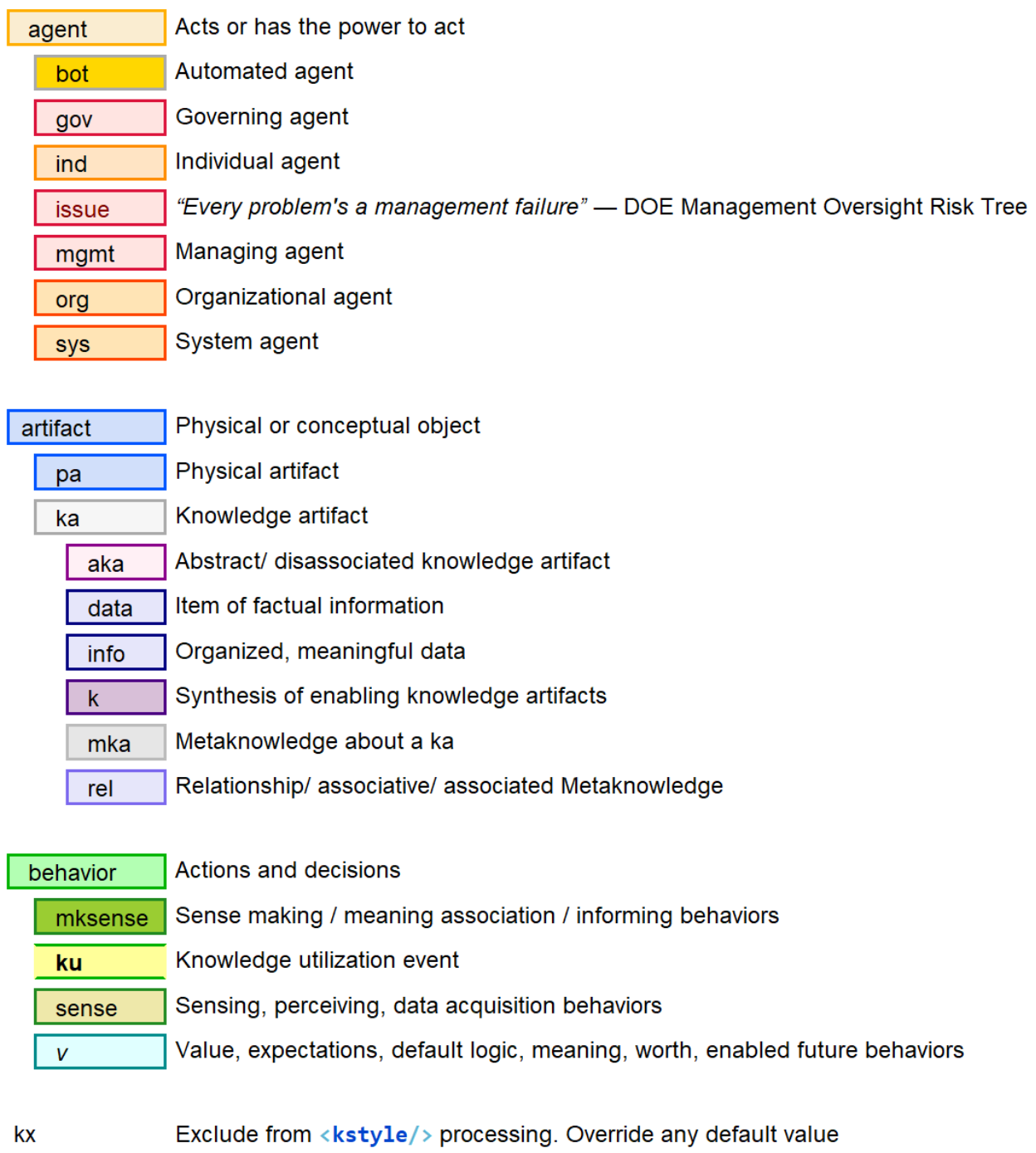kfam modeling
kfam started as a natural language for discussing project activities and how knowledge enables behavior. Some of that ambiguity has remained as the language has evolved into an analytical system, modeling language, and engineering framework. The most complete, published definition of kfam can be found in Knowledge Flow Modeling and Analysis with Focus on Enabling Actions and Decisions within the Business Process.
kfam was first used as a modeling language when markup program managers were being blamed for expected IT schedule slippages. Finding the solution was pretty easy.
Map out the processing steps, defining each of the transforms and intermediate data forms
Identify the responsible agents. Who was doing the work? A person? A bot? Some combination?
Any knowledge gaps or other barriers to progress?
Where does any missing information need to come from?
Figure 25. Knowledge gap analysis
 |
It turned out that all of the knowledge gaps were pending IT decisions. The problem went away. We also made a couple of refinements to the startup process.
Here's a more-complete set of kfam elements: Any element can join a class by setting the @k attribute to the listed value.
Figure 26. @k values and associated colors
